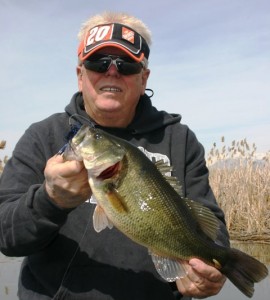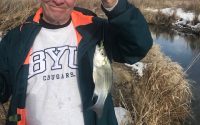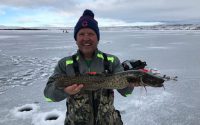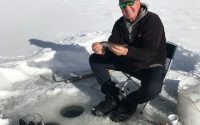Utah Lake — Catch Largemouth Bass

Largemouth bass have lived in Utah Lake since 1882. They have endured drought, pollution, liberal fishing limits, and the lack of a warm-water fisheries program in Utah. The Division of Wildlife Resources has done precious little to promote the bass fishing in Utah. Because of that, there are few published reports on where to find bass on Utah Lake.
But, that is about to change.
Let’s take a 10,000 foot view of Utah Lake, where to find the Largemouth bass, and how to find them. The next article will cover bass forage, and then we’ll discuss baits. Then, we will discuss navigation and safety on Utah Lake. Well, let’s get started.
Utah Lake stretches along the Utah Valley for more than 20 miles. It averages 4 miles wide and is home to catfish, white bass, largemough bass, catfish, crappie, blue gills, sunfish, walleyes, and carp. There are a few smallmouth bass in the lake but not in sufficient numbers to target.
Utah Lake is a natural and ancient lake which has several inlets or tributaries that brings water from the nearby mountains. Here is a partial list of the tributaries and small streams that enter the lake: Provo River, Spanish Fork River, Hobble Creek, Spring Creek, Powell Slough, Battle Creek, American Fork River, Fisher Ditch, and several unnamed irrigation inlets.
Largemouth bass frequent the areas surrounding the mouths of each of these inlet streams. In addition to the tributaries, each of the marinas in the lake are excellent areas to hold bass. There aren’t too many marinas on the lake but here is a list of them: Utah Lake State Park, Lincoln Beach Marina, American Fork Boat Harbor, Lindon Boat Harbor, Saratoga Springs Boat harbor, and Pelican Point.
There is only one outlet from the lake and that is the Jordan River. None of the inlets or outlets are navigable with motorized boats.
The other major areas in which to find bass are: Lincoln beach near the hot springs, the irrigation ditches and marsh area east and northeast of Lincoln Beach all the way to the Spanish Fork River. Just north of Lincoln beach is the Bird Island area. This area holds a lot of fish but is difficult to navigate because the water is not clear and it is very shallow in certain areas.
Next, there are pumps and pump houses on the west side of “West Mountain” in the southwest part of the lake. Powell Slough is a “sleeper” area that can hold good numbers of largemouth that seem to travel in pods. Find a pod and you’ll catch great bass. The Saratoga Springs area is marshy with channels running through the flooded reeds. This is a thermal area and holds fish year-round. Finally, the best single area for largemouth on Utah Lake is in the Provo Bay or Mud Lake area. This is a huge flooded marsh which hold enormous numbers of white bass, walleyes, cat fish and or course Largemouth.
In the next article, we’ll take a look at the forage species in the lake and some lures that consistently catch fish. Later, we’ll take a look at safety concerns on the lake with shallow water, rocks, and wind.
Then, once a week I’ll update the fishing report on Utah Lake.
I learned to bass fish in Texas with the help of Jimmy Houston and other top professionals. But, it wasn’t until I moved to Utah in the late 80s that I discovered the largemouth bass of Utah Lake. From then until now, I’ve caught literally thousands of largemouth and Utah Lake has become one of my all-time favorite haunts. If you haven’t fished the lake, it would be a great addition to your fishing bucket list.










